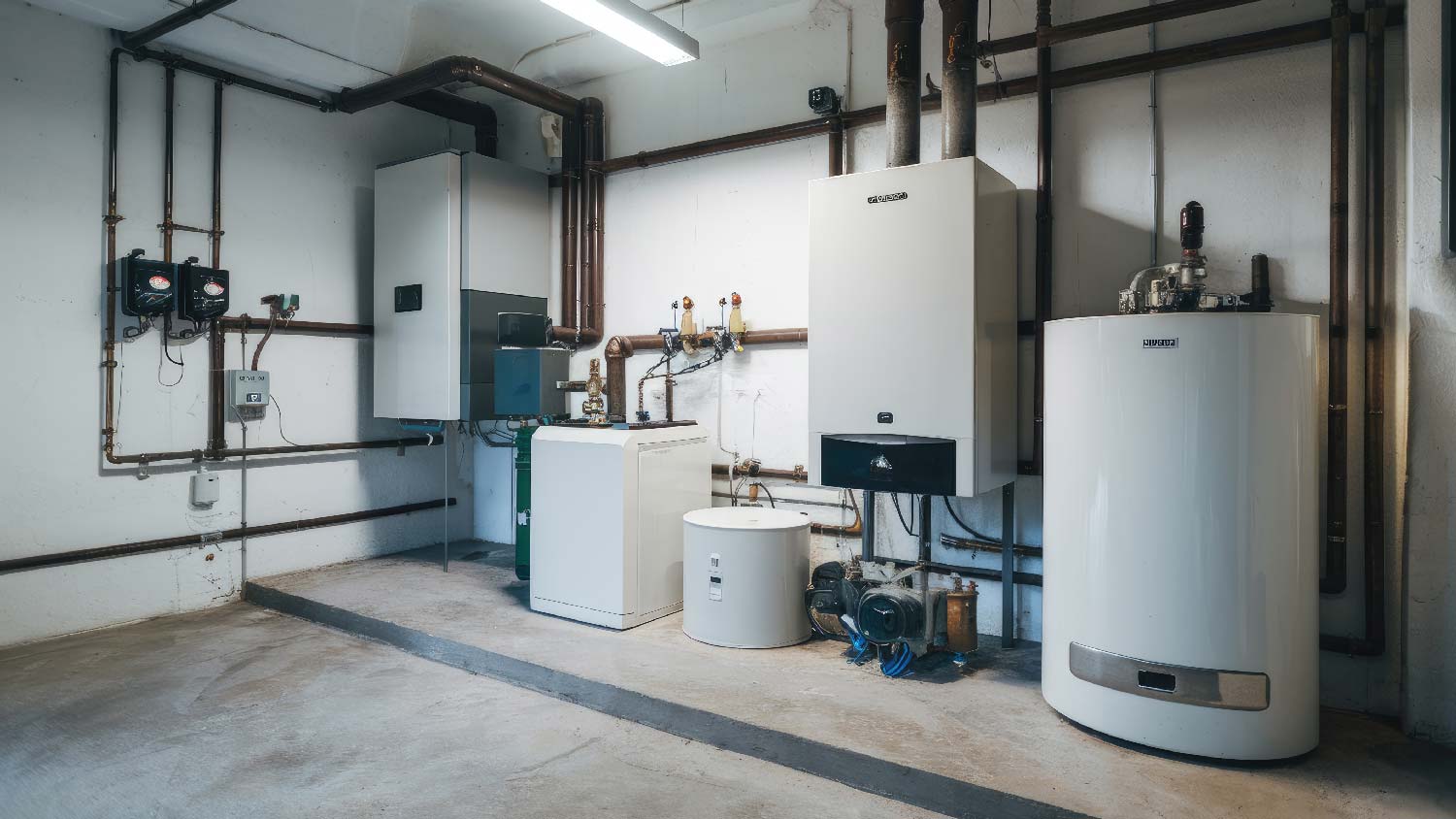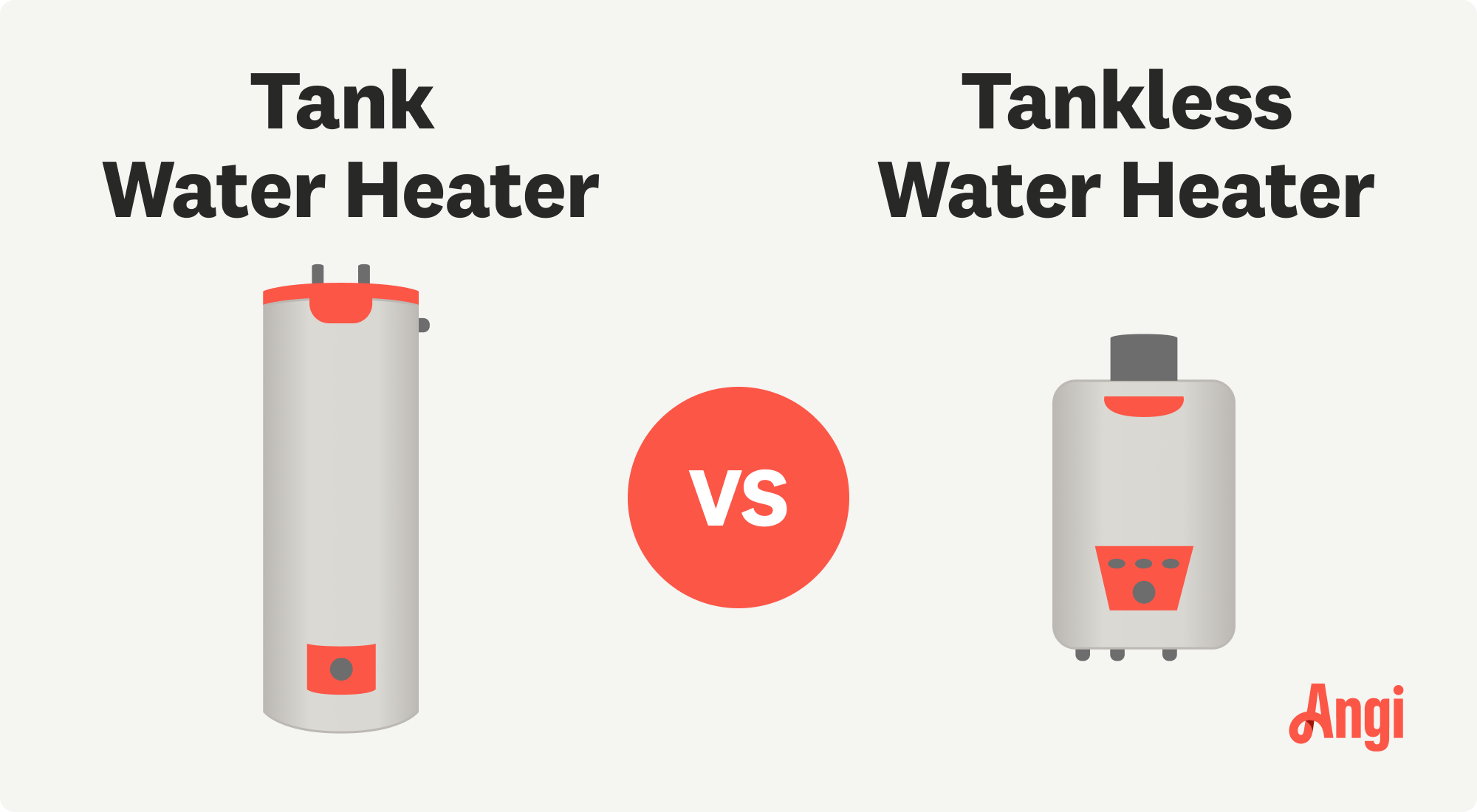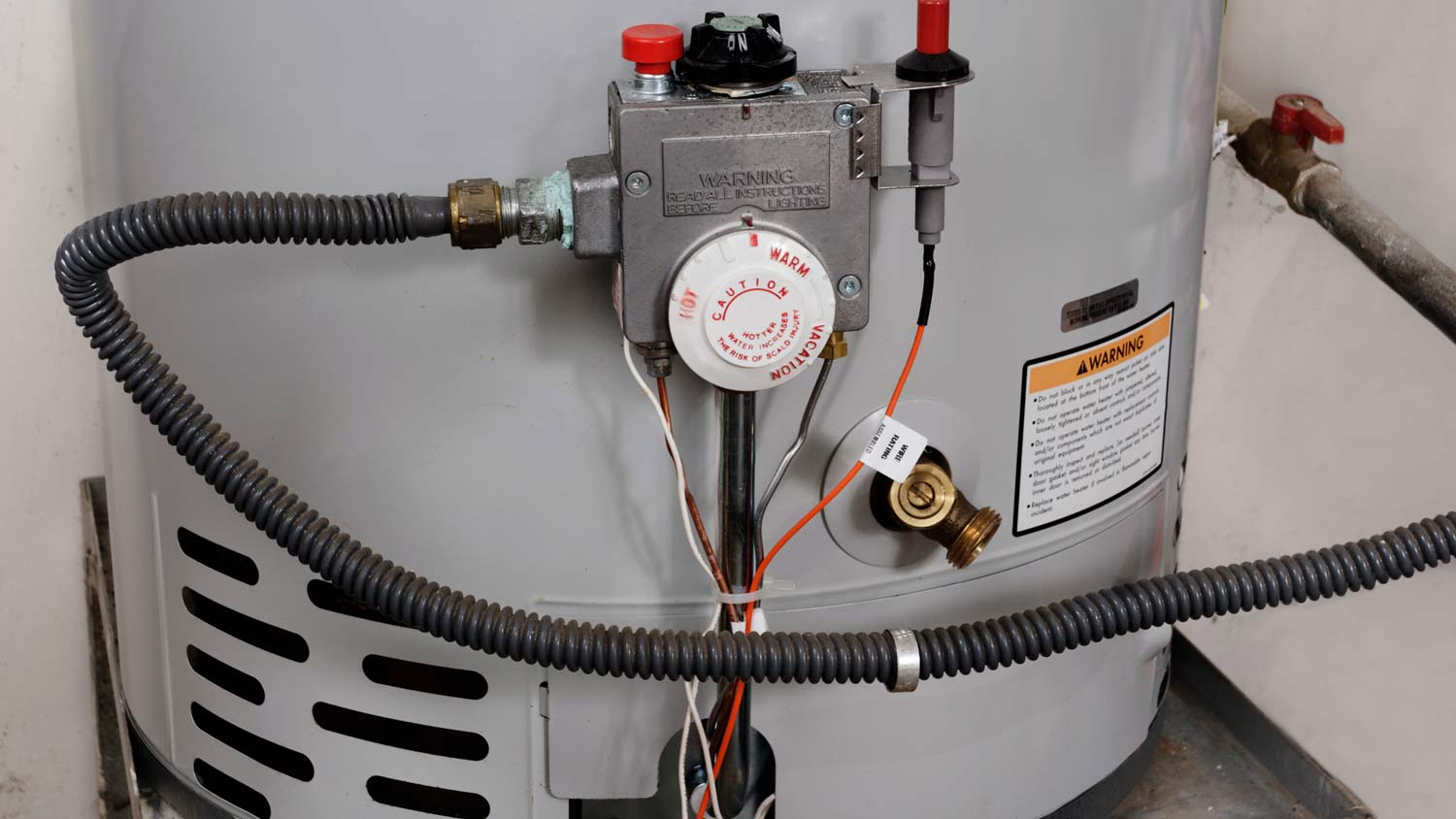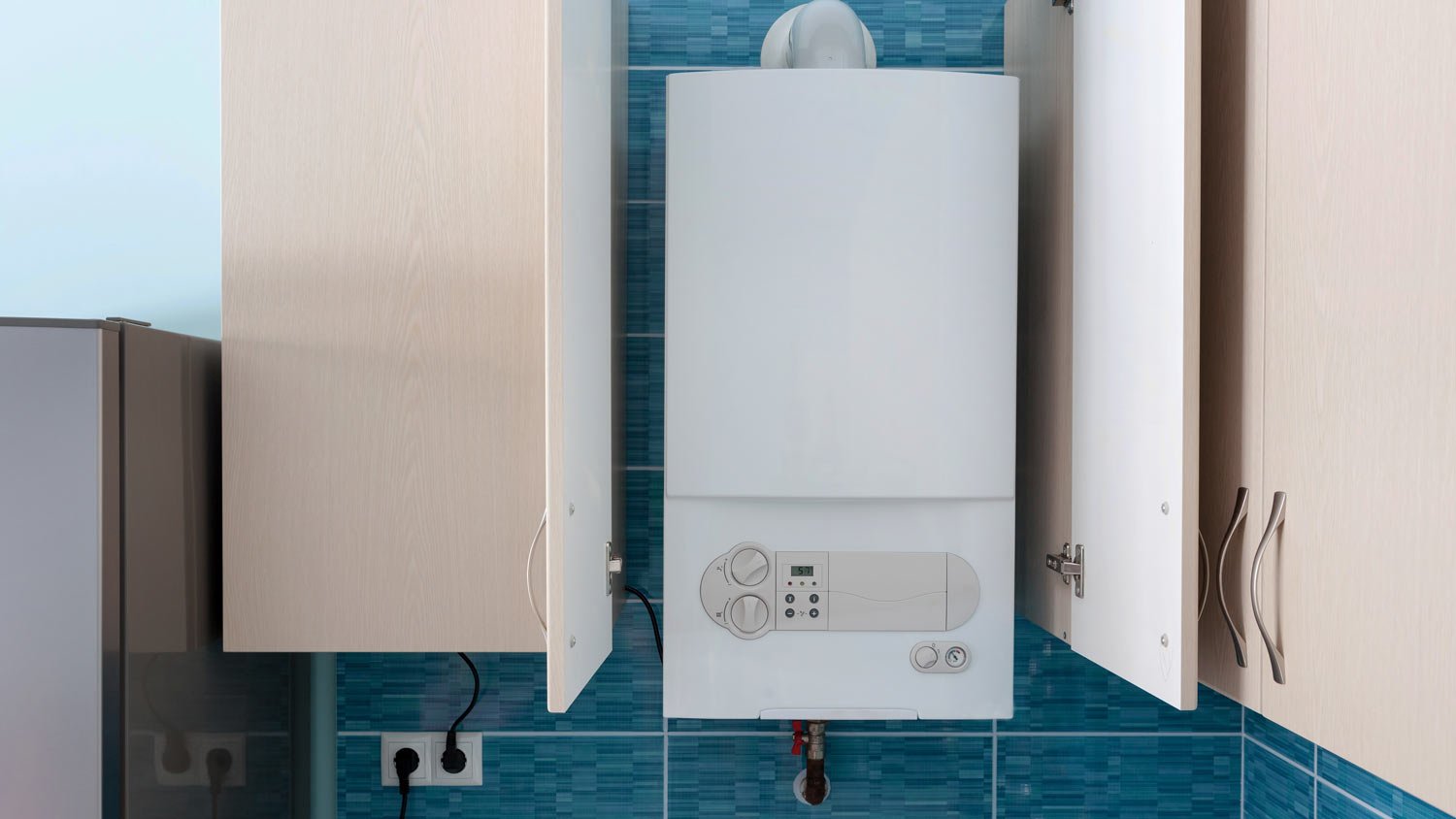Tankless Water Heater vs. Tank: Which Is Right for You?
The competition is hot between storage tank and tankless water heaters


Storage tank and tankless water heaters both supply your home with hot water.
Tankless water heaters have higher installation and maintenance costs, but they save money in the long term by using less energy.
Storage tank water heaters have shorter lifespans, but they accommodate high demands for hot water.
The best option depends on your home size, water usage, desired cost, and more.
Hot water heaters are responsible for your steamy morning showers, high-temperature laundry cycles, and sterilizing heat in the dishwasher. If you’re in the market for a new hot water heater, the first step is choosing between a tankless water heater versus a tank heater. Here’s what to know.
Tank vs. Tankless Water Heater: Key Differences

Storage tank water heaters hold pre-heated water in a container, while tankless units warm up water before it’s used. Each has advantages and disadvantages related to cost, maintenance, installation, and more.
What Is a Storage Tank Water Heater?

Storage tank units hold pre-heated water for immediate use. They’re the most common type of water heater. Most homeowners keep them in a basement, garage, or utility room.
| Pros | Cons |
|---|---|
| Heated water can be used instantly | Energy inefficient |
| Lower installation and repair costs | More expensive to replace |
| Works with many different fuel sources | Shorter lifespan |
| Accommodates high demands for hot water | Take up more space |
Best for:
Households that use a large amount of hot water
Homeowners who want lower up-front costs
Those with enough space to accommodate a storage tank heater
Pros of Storage Tank Water Heaters
Storage tank heaters hold hot water in a container, which gives you immediate access to it. Because tanks come in different sizes, ranging from 20 to 100 gallons, they can accommodate high water demands.
Traditional tanks have lower installation costs than tankless heaters, and maintenance is also less expensive. Nowadays, propane, electric, natural gas, or solar water heater designs are available.
Cons of Storage Tank Water Heaters
One of the biggest downsides is the space requirement. Storage tanks average about 2 feet wide by 5 or 6 feet high, and you’ll need extra space for plumbing and maintenance access.
Tank-based water heaters aren’t as energy efficient because they heat water throughout the day, leading to higher utility bills. Replacements are also more expensive because of their larger size. These units only last 10 to 12 years, while tankless options can last twice as long.
What Is a Tankless Water Heater?

Tankless water heaters, also called demand water heaters, have been growing in popularity. Instead of storing pre-heated water in a holding tank, they warm the water as it passes through a heat exchanger. Like tank-style water heaters, tankless water heaters have pros and cons.
| Pros | Cons |
|---|---|
| Uses less energy, which lowers utility bills | Water takes longer to heat |
| Lower replacement costs | Steeper installation costs |
| Doesn’t take up much space | Higher repair and maintenance costs |
| Hot water supply is virtually endless | May not meet demands of larger homes |
Best for:
Homes with less demand for hot water
Those wanting an energy-efficient household
Homeowners with limited space for a tank heater
Pros of Tankless Water Heaters
Tankless water heaters only run when needed, so they use less energy. Compared to tank-based options, they also have greater longevity, which lowers long-term replacement costs.
Tankless water heaters don’t take up much space—they’re the size of a small suitcase—which benefits those with limited square footage. Also, because they heat water as needed, homeowners enjoy a virtually endless supply.
Cons of Tankless Water Heaters
Is a tankless water heater worth it? As one downside, tankless systems heat water as it’s used. This sometimes takes a few minutes, especially during the winter. Tankless water heater maintenance costs and installation costs are also higher.
What's more, tankless heaters can struggle to supply hot water to homes with larger demand. The problem can be partially mitigated by choosing a properly sized water heater or installing multiple tankless heaters.
Tankless Water Heater vs. Tank
If you’re deciding between tankless water heaters versus traditional storage tank heaters, the winner isn’t always clear-cut. Consult a water heater installer near you to help you decide this option is best for your needs. But here’s how the two options stack up against each other.
Installation Costs: Storage Tank Water Heater
Water heater installation costs vary based on the system, with tankless options being more expensive.
Storage tank water heater installation averages between $600 and $2,500.
The cost of a tankless water heater falls between $1,400 and $3,900.
Transitioning from a tank-based system to a tankless one will raise costs more, and you’ll pay $600 to $1,850 for labor alone. Price also increases if you need to retrofit gas or electrical lines.
Ease of Installation: Tie
Storage tanks are bulkier, which can make installation difficult. On the other hand, tankless water heaters need to be situated properly (close to gas or electric lines) while meeting building codes. Either way, it’s best to consult a pro for installation.
Space Requirements: Tankless Water Heater
If you have limited space, tankless water heaters are best. These wall-mounted units are about 2 feet high by 1 foot wide.
In contrast, storage tank water heaters are about 5 tall and 2 feet wide. Homeowners must save space around the water heater for building code requirements and maintenance.
Maintenance: Storage Tank Water Heater

Though you’ll need to maintain both types of water heaters, tankless systems are fussier. Manufacturers recommend regularly cleaning the air filter, flushing out sediment, and clearing the water filter. Preventive maintenance services are best left to professionals.
Traditional water heater maintenance requires an annual inspection. You’ll also need to flush sediment out of the tank, so it’s helpful to learn how to drain the water heater.
Repairs: Storage Tank Water Heater
While water heater repair costs vary, tankless units are more complex, leading to higher bills.
Tank water heaters cost between $100 and $500 to repair.
Repairs for tankless water heaters cost between $100 and $1,300.
Performance: Tie
When comparing tankless water heater versus tank water heater performance, they’re equally effective. The key is choosing the right size.
Storage tank water heater size depends on your square footage and hot water usage.
The size of your tankless water heater is measured in gallons per minute (GPM). Most homeowners choose systems with a flow rate of 2 to 12 GPM, depending on the number of people in the household, appliance usage, and water source temperature.
Longevity: Tankless Water Heater
Storage tank water heaters hold water inside, which can lead to corrosion. Because of this, tankless units last longer.
Traditional tank water heaters last 10 to 12 years.
Tankless water heaters last 20 years or longer.
Energy Efficiency: Tankless Water Heater
Tankless water heaters are more energy efficient, according to the U.S. Department of Energy. Tank-based systems reheat stored water whenever it cools, which raises utility bills.
If your home doesn’t use much hot water (less than 41 gallons daily), tankless water heaters are about 30% more efficient than tank-based systems.
If your home uses more hot water (up to 86 gallons daily), tankless systems are about 11% more efficient.
Operating Costs: Tankless Water Heater
Since tankless hot water heaters use less energy, they have lower operating prices. This correlates to long-term yearly savings of $110 for gas-powered units and $45 for electric units—though it takes time to see these savings, given the higher upfront costs for tankless systems. You can dispel the common myth about tankless water heaters being more expensive.
Long-Term Cost: Tankless Water Heater
Though tankless water heaters cost more to install and maintain, they pay for themselves over time by lowering utility bills. The timeline for savings differs for gas and electric water heaters.
For a gas-powered tankless water heater, you’ll see savings in 9 to 14 years.
Homeowners with tankless electric units experience a payback time of 18 to 34 years.





- Key Pros and Cons of a Tankless Water Heater
- Can You Use a Tankless Water Heater in Cold Climates?
- How Does a Tankless Water Heater Work and What Sets It Apart?
- Is a Tankless Water Heater Worth It?
- How To Install a Tankless Water Heater
- The 5 Biggest Myths About Tankless Water Heaters
- How Long Does a Tankless Hot Water Heater Last?
- Comparing Heat Pump vs. Tankless Water Heaters
- What to Do if Your Tankless Water Heater Freezes
- Is a Water Softener for a Tankless Water Heater Necessary?










